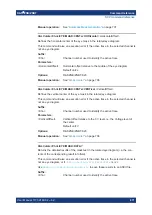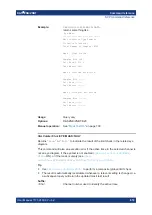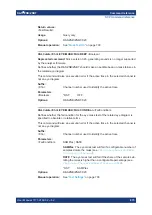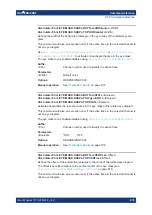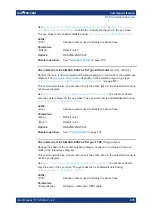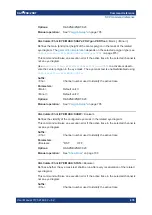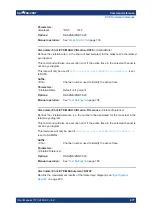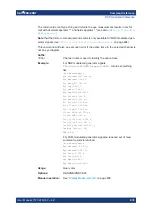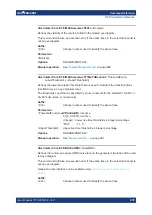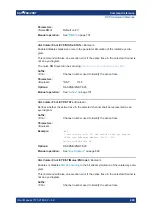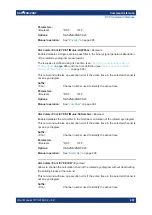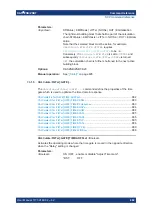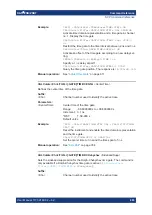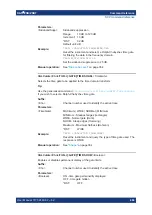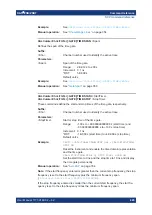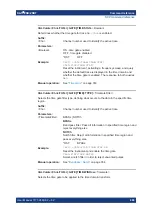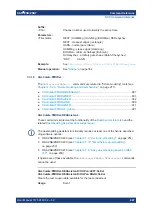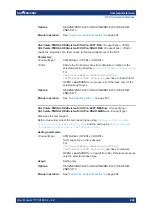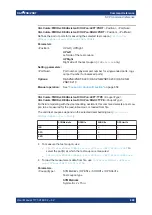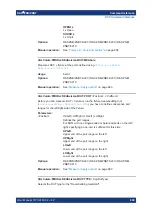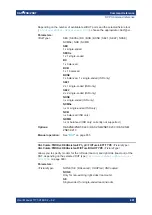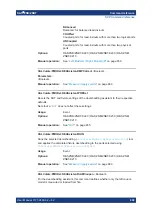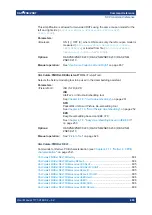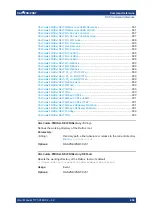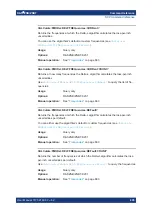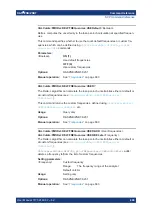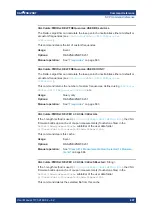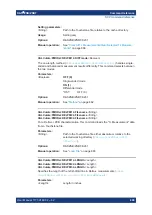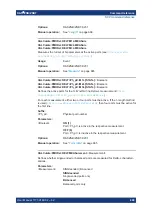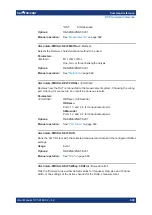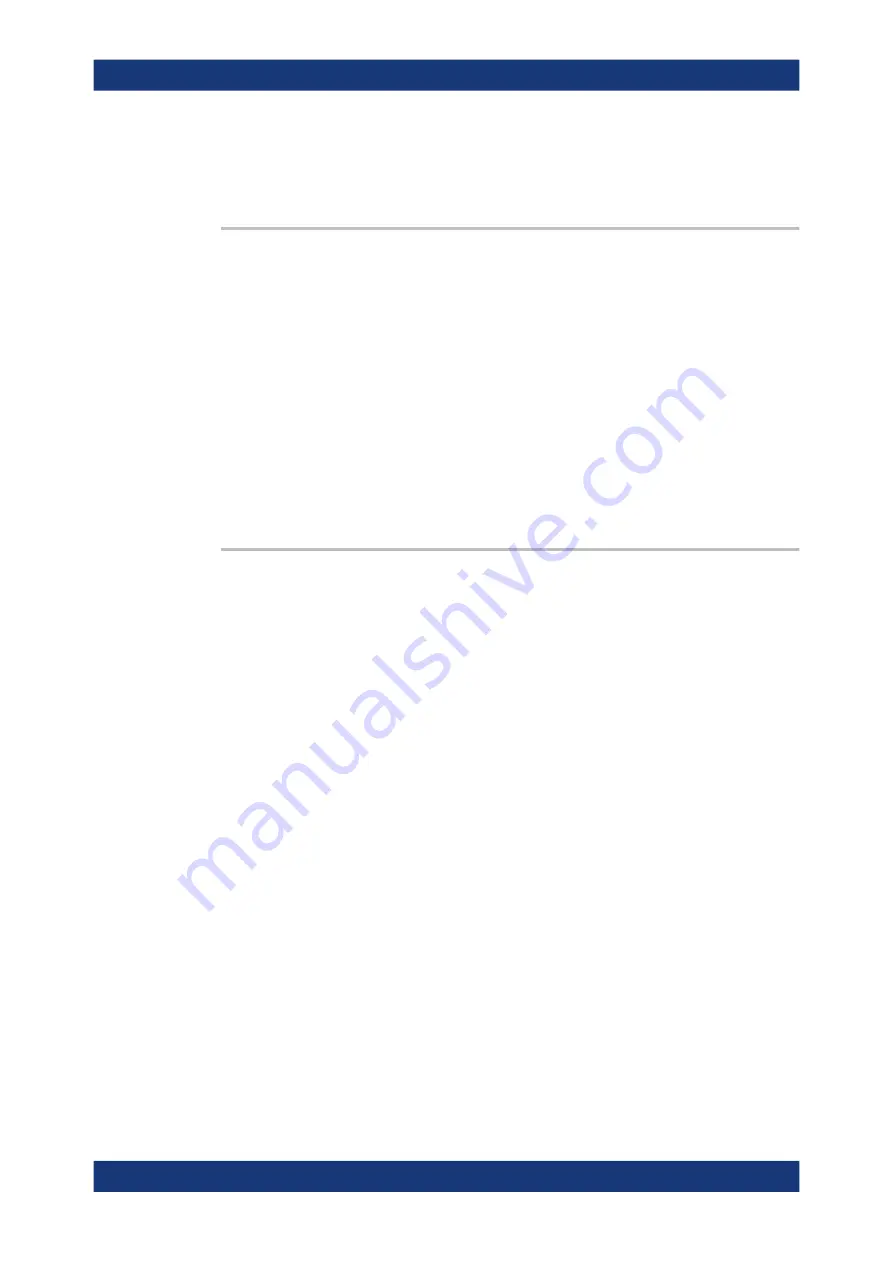
Command reference
R&S
®
ZNB/ZNBT
885
User Manual 1173.9163.02 ─ 62
Example:
See
CALCulate<Chn>:FILTer[:GATE]:TIME:CENTer
Manual operation:
See
CALCulate<Chn>:FILTer[:GATE]:TIME:SPAN
<Span>
Defines the span of the time gate.
Suffix:
<Chn>
.
Channel number used to identify the active trace
Parameters:
<Span>
Span of the time gate.
Range:
2E-012 s to 200 s
Increment: 0.1 ns
*RST:
5E-009 s
Default unit: s
Example:
See
CALCulate<Chn>:FILTer[:GATE]:TIME:CENTer
Manual operation:
See
CALCulate<Chn>:FILTer[:GATE]:TIME:STARt
<StartTime>
CALCulate<Chn>:FILTer[:GATE]:TIME:STOP
<StopTime>
These commands define the start and stop times of the time gate, respectively.
Suffix:
<Chn>
.
Channel number used to identify the active trace
Parameters:
<StopTime>
Start or stop time of the time gate.
Range:
-100 s to +99.999999999998 s (start time ) and
-99.999999999998 s to +100 s (stop time)
Increment: 0.1 ns
*RST:
-1E-009 s (start time) to +4E-009 s (stop time)
Default unit: s
Example:
*RST; :CALC:TRAN:TIME:STAT ON; :CALC:FILT:TIME:
STAT ON
Reset the instrument and enable the time domain representation
and the time gate.
CALC:FILT:TIME:STAR 0; STOP 10ns; SHOW ON
Set the start time to 0 ns and the stop time to 10 ns and display
the time gate permanently.
Manual operation:
See
Note:
If the start frequency entered is greater than the current stop frequency, the stop
frequency is set to the start frequency plus the minimum frequency span
(
CALCulate<Chn>:FILTer[:GATE]:TIME:SPAN
).
If the stop frequency entered is smaller than the current start frequency, the start fre-
quency is set to the stop frequency minus the minimum frequency span.
SCPI command reference

